Imagine a landscape that dramatically changes with the season. In dry months, it is a vast expanse of saline desert. Come monsoon, it transforms into a shallow wetland. The Little Rann of Kutch boasts one of the most fascinating and unusual terrains on earth. Generally speaking, Rann of Kutch is associated with the Greater Rann of Kutch and its neighboring desert the Little Rann of Kutch remains largely hidden. Located roughly 170 km from Ahmedabad in Gujarat, it is spread over a whopping 4,954 sq km.
I visited the Little Rann during the peak winters, which turned out to be the perfect season to explore this place. In summers, the scorching heat makes it almost impossible to meander around this area. You can't visit here during monsoon (June to September) as well since it gets completely submerged. The preferred months to visit the Little Rann are from October to March. It is accessible through Dasada via Zainabad, roughly 20 km from the Bajana Creek, which is a favorite haunt of migratory birds in the Little Rann. Dasada is close to 3 hours' drive from Ahmedabad.
This salt desert is a natural home to many forms of wildlife including mammals, desert birds, and reptiles. Apart from wildlife, the Little Rann offers opportunities to get a sneak peek into the well-preserved culture of the local tribes. Plan your sojourn over 3-4 days to make the most of it. Here is a rundown of some of the most interesting things to do and see in the Little Rann of Kutch.
Desert Safari
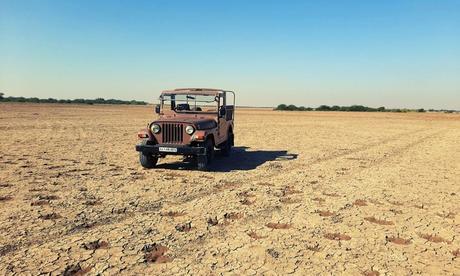
The Little Rann starts buzzing with tourists after monsoon from October onwards. You can take an open jeep safari or explore the Rann on a motorcycle or a self-driven vehicle. As our safari vehicle penetrated deeper into the Rann, many hidden wonders of this place kept unfolding before us. The unique topography of the Little Rann is what makes your safari an unforgettable experience.
The choice of safari is completely on you and it is not provided by the Forest Department. Your hotel can arrange a safari for you. It is mandatory to obtain the entry permit from the Forest Office at Zainabad.
Birdwatching
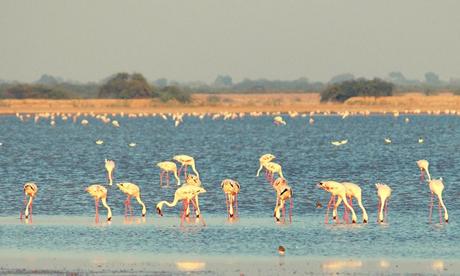
At the end of the rainy season, this enormous desert turns into a seasonal wetland, providing an important nesting and breeding ground for migratory birds. Bajana Creek and the adjacent Nawa Talav are the two main sites inside the Little Rann, where migratory birds can be spotted. Greater flamingo, lesser flamingo, common crane, demoiselle crane, pelican, and lark are some of the regular wintering birds here.
Unlike many wildlife sanctuaries, you can venture out of your safari jeep here. Take a stroll around the area and enjoy the panoramic views of this desert wonderland. Little Rann of Kutch attracts a lot of nature lovers and birders in particular during the migratory bird season. November to February are the best months for a perfect birding experience in the Little Rann. The migratory birds start to return to their native land towards the end of February.
Be cautious if you are ambling around a water body in the Rann as there is no demarcation between marshland and dry land. You might suddenly get the feeling of sinking into the soft mud. Don't forget to carry your favorite DSLR camera if you are interested in photography. Keep looking out while your safari jeep is on its way to the Rann. You may spot numerous resident birds, such as pond heron, egret, and kingfisher.
Explore Wildlife
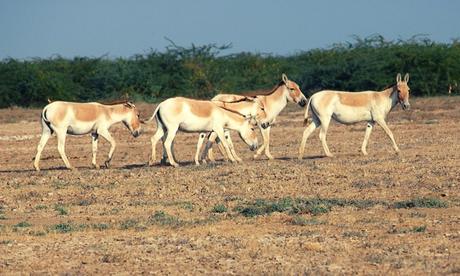
It is hard to believe that wildlife can exist on this barren land sparsely covered with vegetation. But, this huge stretch of flat land is the abode of a wide variety of wildlife. The most conspicuous animal of Little Rann of Kutch is the Asiatic or Indian wild ass, also known as "Ghudkhur" in the local language.
The entire area was declared as Indian Wild Ass Sanctuary in 1972 to protect this endangered species of wild ass. It is the only known home of Indian wild ass on earth. They are shy and quickly run away from sight after hearing the loud noise of safari vehicles. Our guide told us that they can run at an average speed of 50 km per hour.
Nilgai is another species which is widely sighted in the Rann. It is a natural habitat for many other wild species including desert fox, hyena, desert cat and plenty of snakes and lizards. You may also spot a peculiar owl species known as short-eared owl near the marshland. Contrary to their nocturnal image, they are often active during daylight.
Visit Salt Pan
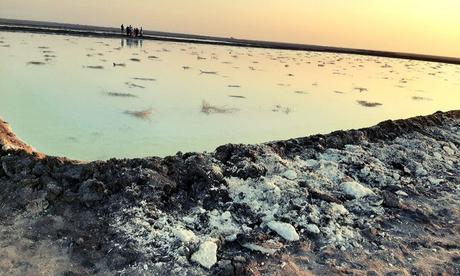
Deep inside this arid land, I was surprised to see a few huts. That's when our guide enlightened us about the famous salt pans of the Rann and the local community engaged in salt farming. It made me even more curious. I got off from the jeep and decided to find out more.
Salt production is the primary means of livelihood for the Agariya community living in this area. They prepare makeshift huts during the salt farming season spanning 6-7 months starting October every year.
As the monsoon finishes and the water recedes from the month of October, the farmers begin to set up salt pans by clearly marking the boundaries of their fields. The next step is to fill the salt pans with the briny groundwater that is extracted with the help of pumps. All the water gradually dries up due to the natural evaporation process leaving behind salt crystals. In the harvesting season, the salt crystals are piled up using big wooden rakes. The Agariyas harvest 75% of India's total salt production.
By the end of winter, it is all collected and loaded into the trucks for dispatching to the factories for further refinement. Once the harvest season comes to an end and the monsoon starts knocking in, the Agariyas return to their villages leaving their makeshift shanties. If you happen to visit this place, don't miss seeing the silvery white salt pans. It is one of the unmissable experiences of the Little Rann of Kutch.
Watch The Spectacular Sunset

Though sunset can be seen everywhere but watching the colorful sundown in the Little Rann of Kutch is a memorable experience. You are bound to catch sight of the magnificent sunset during evening safari unless you are in a hurry to return.
Halt your safari vehicle for a few moments and watch the sun go down the horizon, painting the sky in varying shades of red, yellow and blue. The tranquil and gorgeous sunset in the Rann is no less than a feast for the eyes.
Experience Traditional Bead Craft Making
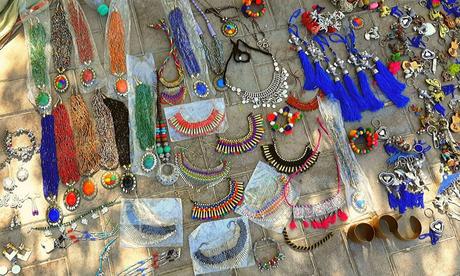
The Kutch region has well preserved this heritage art of Gujarat. Tribal artisans, particularly women do beadwork to create ethnic ornaments and home décor items. You will notice many tribal women wearing beadwork traditional jewelry if you take a stroll in the nearby villages.
These are delicately handcrafted by threading together beads of different sizes, colors, and shapes using a sewing needle. Some resorts in this area also provide space to these women for displaying their work so that guests get an opportunity to buy their favorite bead craft items. On the other hand, it provides a means for the artisans to earn some extra money.

